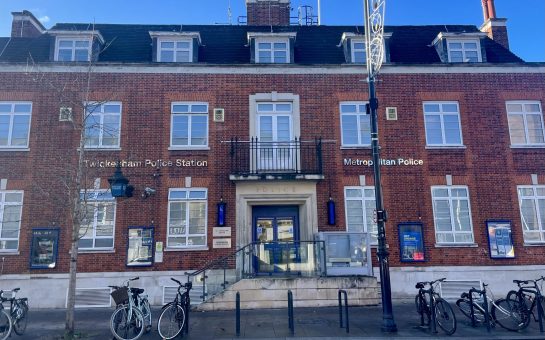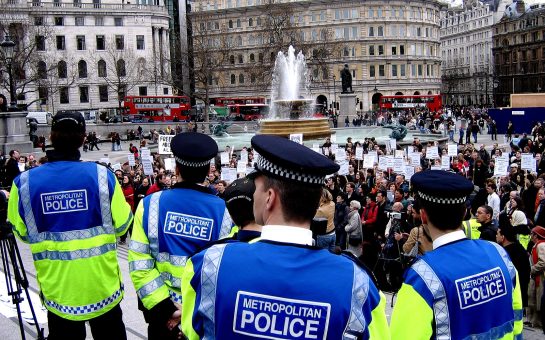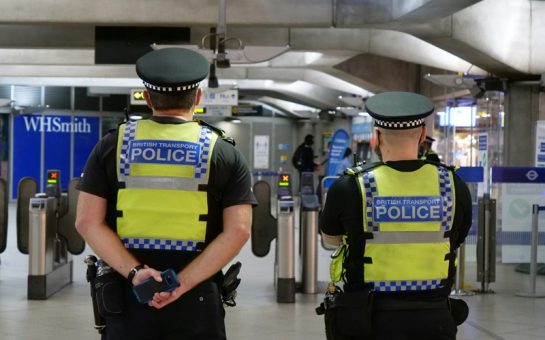On this day in 1995, the death of black man in police custody led to a riot in Brixton after a peaceful protest turned into a standoff between demonstrators and police.
26 year-old Wayne Douglas was being questioned about a burglary when he collapsed in the police station, with a later post-mortem revealing he had been suffering from heart disease.
However, the inquest into his death additionally showed that Douglas had been held face-down while his hands were handcuffed behind his back on multiple occasions.
An initial picket outside the police station turned into a march through Brixton’s high street, where about 100 protestors eventually clashed with police forces.
The riot involved attacks against police, looting of shops, and cars being set on fire.
Five hours after the riot began, 22 people had been arrested and three police officers injured, including one who was reportedly pulled from his motorcycle by the crowd.
Met Police Commissioner at the time Paul Condon said: “It was not Brixton rioting last night.
“It was a small minority of thugs and criminals who, as ever, were looking for the opportunity to embark on criminal activities.”
However local residents pointed to the riot as the clear product of racial discrimination in an impoverished area.
The New York Times reported resident Harold Douglas saying at the time: “Last night happened because the only time a black man is seen and listened to is when he comes out on the street.”
Today, Brixton residents continue to remember the riot as an expression of long-simmering anger against a discriminatory police force which unjustly targeted Black communities.
Brixton-born Damien Morton, 43, said: “People felt we were being pushed out of Brixton to make space for yuppy white kids, and the police were letting them do it.”
Furthermore, reflecting on this anniversary has lead some Black Londoners to compare the state of policing in London in 1995 to the present day, finding that the unjust use of policing against Black communities continues in 2023.
Morton, a Black man, said: “We were angry then and we are now- this was nearly 30 years ago, and nothing’s improved.”
His son Alec, 19, added: “My friends and I are still facing intimidation in a way that white kids will never experience.”
Paul Anderson MBE, Chief Executive of charity Voyage, which aims to empower BAME youth across Greater London, commented on the weight of this anniversary for black Londoners.
Anderson said: “Wayne Douglas serves as another poignant reminder of the ongoing disparity in the application of law enforcement in black communities across London and the United Kingdom.
“Despite pivotal reports such as the Macpherson Enquiry 1998, Scarman, the Lammy review, and more recently, the Baroness Casey Report, it is disappointing to observe that the police force appears resistant to meaningful transformation and change.
“These investigations and recommendations, while highlighting the urgency for reform, seem to encounter barriers which I believe comes from the persistence of institutional memory loss, high turnover of senior Police leaders, who avoid being held to account and the Police Service being used as a political battering ram by ministers bent on making names for themselves.
“In expressing our deepest condolences to the Douglas family, it is our hope that Wayne’s tragic passing, along with others before and after him, will not be in vain.”
A Metropolitan Police spokesman said: “Over the years the Met has undergone enormous change and learning, implementing improvements and recommendations from reports including the Lammy Report and the Stephen Lawrence Inquiry Report to make us a more effective and skilled police service.
“This is not the same Met as it was 20 – 25 years ago.
“We have improved how we investigate and respond to crimes; how we engage and work with our communities; how we develop and support our own staff and have made huge improvements in becoming a more representative workforce, now provide mandatory diversity training for all officers and staff which promotes respect and understanding towards all communities and have introduced body worn cameras so that the encounters officers have with the public are recorded and are accountable.
“We have done more than almost any other organisation to ensure that racism isn’t tolerated and we champion equality and inclusion.”
Featured image credit: Kim Aldis, CC BY-SA 3.0 license, via Wikimedia Commons




